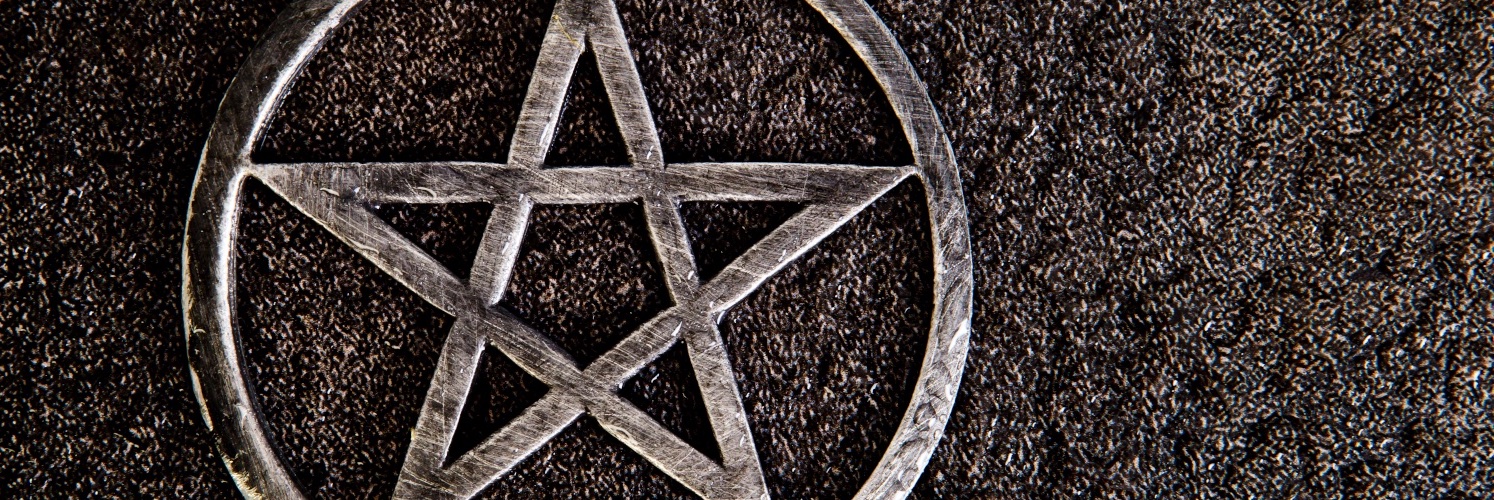“Nine woods in the Cauldron go — burn them quick an’ burn them slow.” Thus goes the couplet from “The Rede of the Wiccae” by Lady Gwen Thompson. In this poem, originally published in Green Egg in 1975, Lady Gwen doesn’t specify which woods are the nine that should go in the ritual fire, only that Elder should not be burned. A poem which listed nine woods from the Celtic Ogham Woods came later and is, as far as I can tell, unattributed. However, those nine woods caught on in certain circles as “the” Nine Woods of Wicca, to be used in sacred fires at different times of the year.
In my personal practice, I use twigs from the Nine Woods as kindling for any sacred fire I build. I also carry Nine Woods Oil for those times when I don’t have twigs available, so that the magickal essence of the Nine Woods can still go into the fire. I consider this an exercise in honoring tradition, even if that tradition is not very old, and connecting with ancestors who very likely did build their sacred fires in a certain way.
The Nine Woods
Birch
“Birch in the fire goes
To represent what the Lady knows.”
Birch is a tree of inspiration. In the fire, it represents the Goddess’s wisdom. It is a wood of handicrafts; you can make anything from paper to canoes out of birch. It is known by its distinctive papery bark and white flesh.
Oak
“Oak in the forest towers with might,
In the fire it brings the God’s insight.”
Oak is a tree of strength. In the fire, it represents the God’s wisdom. It is a strong wood used to make ships, houses, barrels, and chests. Its bark can tan leather. Its galls can make an ink for writing. It is known by its seeds, the capped acorn.
Rowan
“Rowan is a tree of power,
Causing life and magic to flower.”
Rowan is indeed a tree of power. In the fire, it represents the life force which binds all things together. It is a dense wood suitable for walking sticks, tool handles, and sleds — the things with which we toil. It is known by its red berries.
Willow
“Willows at the waterside stand
Ready to help us to the Summerland.”
Willow is a tree of remembrance. In the fire, it represents the ancestors whose spirits dwell in the Summerland. Willow is a very flexible wood, used for baskets, nets, and brooms. Its bark sap contains salicylic acid, which is used medicinally to treat warts, acne, ringworm, and dandruff. It is known by its thin, drooping branches.
Hawthorn
“Hawthorn is burned to purify
And to draw faerie to your eye.”
Hawthorn is a tree of purification. It’s also a tree of magick. In the fire, it represents clear sight and perception of the unseen. It is a food tree; both the red haws and the bountiful white flower petals are edible. The tree is used as a hedge plant, to create natural fencing around areas.
Hazel
“Hazel – the tree of wisdom and learning
Adds its strength to the bright fire burning.”
Hazel is a tree of knowledge. In the fire, it represents the wisdom available to us through learning, experience, and interaction with the spirits. Hazel is also a food tree; hazelnuts are edible. The wood is used for wattle as well as for coracle boats.
Apple
“White are the flowers of Apple tree
That brings us fruits of fertility.”
Apple is a tree of fertility. In the fire, it represents the creative power each of us has, not only to create life but also to create art and magick. Apple is a food tree; its fruit is a staple produce in many parts of the world. The wood of the apple tree is used to smoke meats.
Grapevine
“Grapes grow upon the vine
Giving us both joy and wine.”
Grapevine is not quite a tree, but it is listed among the woods because well-established grapevine can be as thick and strong as a tree. In the fire, it represents joy and beauty. The vine is most often used in wreaths in the home or as the foundation for woven landscaping pieces; its fruit and leaves are edible.
Fir
“Fir does mark the evergreen
To represent immortality seen.”
Fir is a tree of longevity. In the fire, it represents the eternity we all exist in and the enduring nature of the universe. Fir trees are popular holiday trees and some varieties have medicinal qualities; the wood itself is used for indoor lumber or as a pulpwood for paper.
The Tenth Wood: Elder
“Elder is the Lady’s tree
Burn it not or cursed you’ll be.”
Elder is a tree of health and sickness. Cooked, its berries are an immune booster. Fresh, its berries are poisonous. Its leaves, flowers, and wood is toxic to breathe or ingest. So the warning against burning it is not only magickal but practical. The wood is generally grown to be ornamental and is not harvested.
Nine Woods Oil
To make Nine Woods Oil, collect twigs from each of the Nine Woods. Cut them into one-inch pieces and split them in half lengthwise to expose the inner wood. Put these pieces into a pint Mason jar; it’s okay if it doesn’t fill the jar up entirely. Then, fill the Mason jar with jojoba oil to cover the woods, shake vigorously, and set in a dark place. Shake the mixture every few days; decant after a season or two. This is a good project to do at Beltaine or Samhain — by the time the next sabbat comes around, your Nine Woods Oil will be ready!

